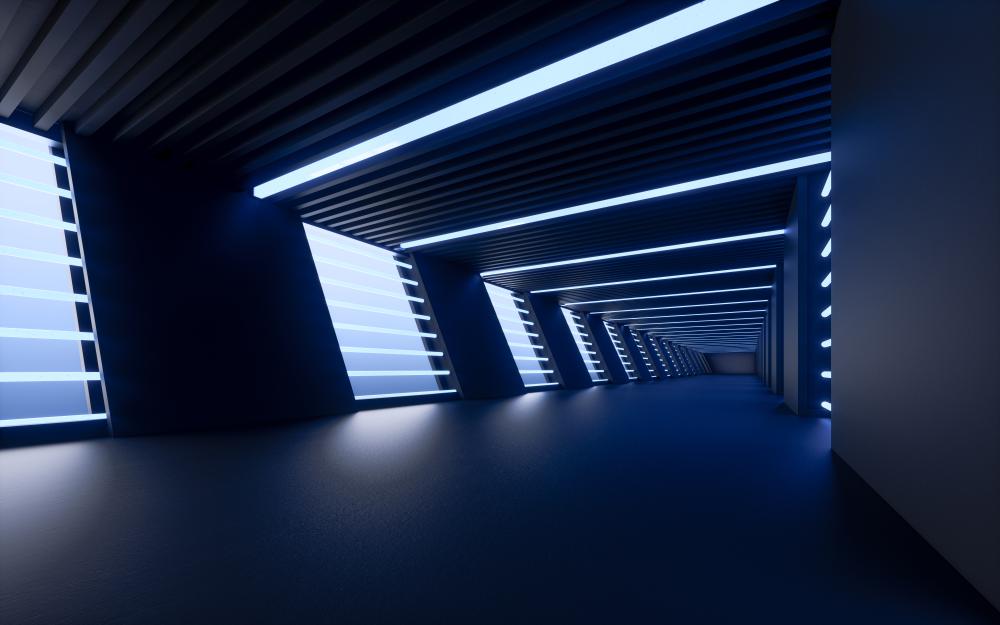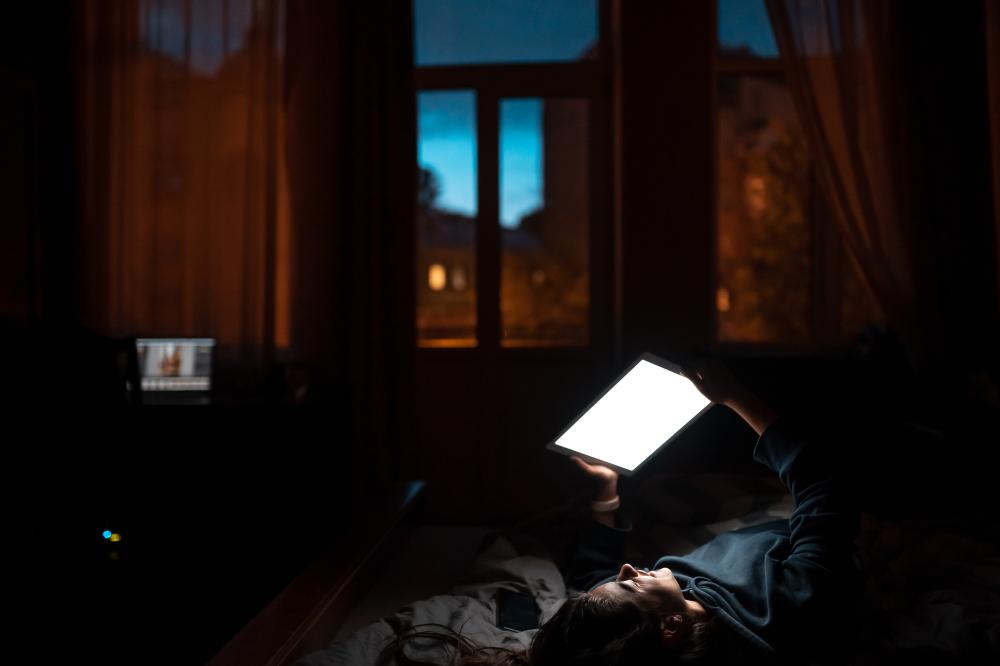
The Importance of Circadian Lighting
For most of human history, our lives were synchronized with the natural light cycle of the sun. We awoke with the sunrise and ended our days as the sun dipped below the horizon. However, modern lifestyles often keep us indoors, away from those natural rhythms. Circadian lighting offers a solution, mimicking these natural cycles to align with our biological clocks, thereby promoting better health and well-being.
Recent studies indicate that improper lighting can disrupt our sleep patterns and impair cognitive functioning. However, by emulating the natural progression of daylight, circadian lighting systems can enhance productivity, reduce stress levels, and contribute to a more restful night’s sleep.
In my twenty years at Artificial Sky, I’ve observed firsthand how environments integrating these lighting systems see marked improvements in mood and efficiency. Clients frequently report a boost in morale and a palpable reduction in stress among their staff and patients.
How Does Circadian Lighting Work?
At its core, circadian lighting is all about the science of timing. By adjusting the color temperature and brightness of light throughout the day, these systems replicate the natural arc of the sun. Typically, blue-enriched light during the morning and midday stimulates alertness, while warmer tones in the evening encourage relaxation and the production of melatonin, a hormone essential for sleep.
To achieve this, sophisticated algorithms control LED light fixtures, simulating the subtle transitions of color and intensity we experience outdoors. This artificial yet biologically aligned lighting offers a seamless transition from wakefulness to restfulness, positively influencing our mood, alertness, and overall health.
Benefits of Circadian Lighting in Everyday Life
With our increasingly urbanized world, where many of us spend up to 90% of our time indoors, circadian lighting is more crucial than ever. This technology supports the intricate dance of our biological rhythms, resulting in a multitude of advantages:
- Improved sleep quality and duration
- Enhanced mental health and reduced symptoms of depression
- Greater productivity and alertness during working hours
- Better physiological health with reduced risks of chronic diseases
- Mitigated effects of Seasonal Affective Disorder (SAD)
Artificial Sky has installed these systems in thousands of locations worldwide, from hospitals to offices, and the feedback is overwhelmingly positive. Clients often emphasize the striking aesthetic appeal alongside the myriad health benefits.
Steps to Implementing Circadian Lighting in Your Space
Integrating circadian lighting into your home or workplace is a transformative decision. Here’s a step-by-step guide to help you through the process:
- Assessment: Begin by evaluating your existing lighting setup and identifying areas where natural light is lacking.
- Consultation: Reach out to lighting professionals or companies like Artificial Sky to discuss your unique needs and the possible solutions available.
- Design: Work with designers to create a lighting plan that covers the desired spaces effectively, considering both function and aesthetics.
- Installation: Employ certified technicians to install the system, ensuring it’s optimized for your specific environment.
- Maintenance: Periodic checks and adjustments will keep the system running smoothly and adapt to any changes in the space or usage patterns.
Do I Need Circadian Lighting?
Determining whether circadian lighting is right for you depends on several factors. If you or your team experience issues like fatigue, poor concentration, or sleep disturbances, these systems could offer significant improvements. Circadian lighting isn’t just a tool for wellness but an investment in overall life quality.
Many of my clients express initial skepticism, only to become advocates after observing the tangible benefits firsthand. Wouldn’t it be refreshing to enter a workday feeling naturally energized or to sleep deeply without tossing and turning? That’s the promise of circadian lighting.
Ask yourself what environments you spend the most time in and assess whether they support or hinder your biological rhythms. You might find that the spaces you inhabit aren’t just where you exist, but where you can truly thrive.
Challenges and Considerations in Adopting Circadian Lighting
While the advantages of circadian lighting are aplenty, there are challenges to consider, particularly in retrofitting existing structures. Initial costs can be a hurdle, as can navigating the technical specifications to ensure proper implementation.
Education is often needed to overcome misconceptions about its complex nature. However, with the right planning and expert guidance, these obstacles are surmountable, and the rewards of improved well-being are worth the effort.
Moreover, the rapid advancements in lighting technology mean more affordable and versatile options are now available, making it a viable choice for many different settings.
From my experience, it’s clear: the key to successful adoption lies in understanding your specific needs and working with professionals who can tailor solutions accordingly. By leveraging the power of circadian lighting, you’re not only embracing innovation but nurturing a healthier, more productive lifestyle.

What does circadian lighting do?
Circadian lighting is designed to align artificial lighting with our natural body clocks, or circadian rhythms. Throughout history, humans have synchronized their activities with the sun, waking with its rise and resting with its set. Nowadays, the artificial lighting around us can disrupt this natural cycle, leading to sleep disturbances and reduced well-being. Circadian lighting aims to mimic the sun’s natural progression, delivering blue-enriched light in the morning to promote alertness and warmer tones in the evening to encourage relaxation. This makes it an invaluable tool for anyone seeking to enhance their productivity, mood, and overall health.
In practice, circadian lighting can be transformative, especially in places where people spend a lot of time indoors, such as offices, hospitals, and schools. By harnessing the rhythms of nature, it provides a more holistic approach to lighting that supports our biological needs, ultimately leading to a happier and healthier life. If you’ve ever felt groggy in the morning or struggled to relax at night, ask yourself how your lighting environment might be affecting your rhythm. Would a small shift in your lighting setup help you feel more in tune with your natural cycle?
What light is best for circadian rhythm?
To best support your circadian rhythm, lighting should transition in color temperature and intensity throughout the day. In the morning, cooler, blue-rich lighting helps stimulate alertness and cognitive function, much like the early morning sun. During the day, balanced white light is beneficial for maintaining focus and productivity. In the evening, a shift to warmer, amber tones helps the body prepare for rest by promoting the production of melatonin, the hormone that regulates sleep.
At Artificial Sky, we integrate proprietary technology developed with NASA to mimic these natural lighting transitions. Our systems create a seamless, biologically-aligned lighting environment that’s beneficial not only for mental health but for physical well-being too. Have you considered how altering your environment to reflect these natural progressions might enhance your day-to-day life?
How to set up circadian lighting?
Setting up circadian lighting involves several thoughtful steps. First, assess your current lighting setup to identify areas where natural light is absent or insufficient. Next, consult with lighting experts, such as those at Artificial Sky, to explore tailored solutions that align with your specific needs and spaces. Once a plan is in place, collaborate with designers to implement a lighting scheme that seamlessly integrates both function and aesthetics with the natural progression of daylight.
Installation should be handled by certified technicians to ensure proper alignment and function. Regular maintenance and adjustments are also key to keeping the system optimized. This setup doesn’t just brighten your space; it transforms the way you experience each day, potentially alleviating issues like afternoon fatigue or insomnia. Could enhancing your lighting environment be the key to a more energized and restful daily routine?
Does circadian really work?
The effectiveness of circadian lighting systems is backed by a growing body of scientific research. Studies have shown that when artificial lighting mimics the natural patterns of sunlight, it can significantly improve sleep quality, mood, and cognitive performance. Clients who have installed circadian lighting from Artificial Sky in diverse settings–from hospitals to corporate offices–consistently report notable improvements in both their mental health and productivity levels.
The science behind these results lies in our biology. Humans evolved to live in synchrony with the sun, so our bodies respond positively when our artificial environments reflect this natural order. Whether you’re an individual looking to improve your sleep or a business aiming to enhance workplace efficiency, circadian lighting offers a proven path forward. Why not explore how these systems could align with your health or organizational goals?
Why invest in circadian lighting?
Investing in circadian lighting is about more than just controlling light levels; it’s about embracing a holistic approach to well-being and productivity. By aligning light patterns with our natural rhythms, these systems can help reduce stress, improve sleep, and enhance our overall quality of life. In professional settings, this translates into increased productivity, lower absenteeism, and a more engaged workforce. These are substantial benefits for any organization.
At Artificial Sky, we understand the power of leveraging light for health, which is why we use cutting-edge technology to offer solutions that transform indoor environments. Our products are not just an investment in better lighting; they’re an investment in a healthier, more balanced lifestyle. As you consider your lighting options, think about the potential long-term impact on your well-being and productivity. Could this be the game-changing upgrade your space needs?
What are the challenges in adopting circadian lighting?
Adopting circadian lighting can present some challenges, particularly in retrofitting older buildings. Initial setup costs and technical specifications can seem daunting. However, these challenges are surmountable with the right guidance. At Artificial Sky, we offer expert consultation to help navigate these complexities, ensuring that solutions are tailored to meet specific needs and environments.
The rapid advancements in lighting technology mean there are now more affordable and versatile options on the market. The key to overcoming challenges lies in thorough planning and partnering with knowledgeable professionals who can guide your investment toward the most impactful outcomes. As you explore circadian lighting, consider: What specific roles do current lighting conditions play in your environment, and how might a targeted upgrade enhance these spaces?
Resources
- National Heart, Lung, and Blood Institute (NHLBI) – The NHLBI provides valuable information on circadian rhythms and the impact of lighting on health.
- Harvard Health Publishing – Harvard Health Publishing offers insights into circadian lighting and its benefits for overall well-being.
- Centers for Disease Control and Prevention (CDC) – The CDC presents research and guidelines related to lighting and its effects on sleep and health.